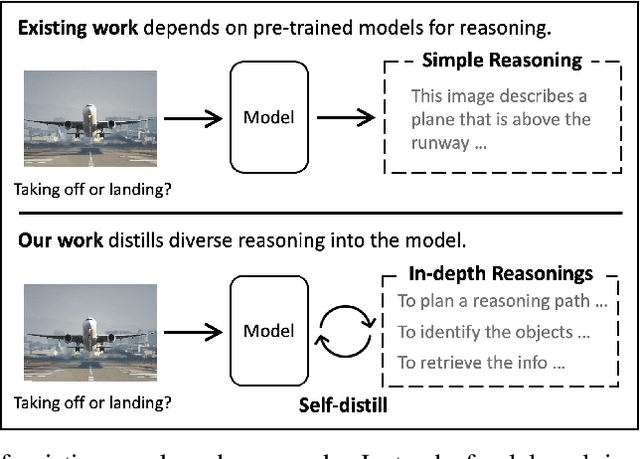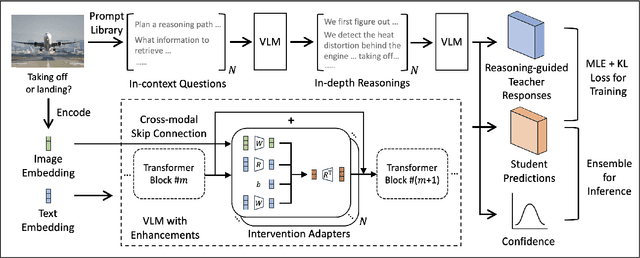Lin Lee Cheong
Amazon ML Solutions Lab
PromptPrism: A Linguistically-Inspired Taxonomy for Prompts
May 19, 2025Abstract:Prompts are the interface for eliciting the capabilities of large language models (LLMs). Understanding their structure and components is critical for analyzing LLM behavior and optimizing performance. However, the field lacks a comprehensive framework for systematic prompt analysis and understanding. We introduce PromptPrism, a linguistically-inspired taxonomy that enables prompt analysis across three hierarchical levels: functional structure, semantic component, and syntactic pattern. We show the practical utility of PromptPrism by applying it to three applications: (1) a taxonomy-guided prompt refinement approach that automatically improves prompt quality and enhances model performance across a range of tasks; (2) a multi-dimensional dataset profiling method that extracts and aggregates structural, semantic, and syntactic characteristics from prompt datasets, enabling comprehensive analysis of prompt distributions and patterns; (3) a controlled experimental framework for prompt sensitivity analysis by quantifying the impact of semantic reordering and delimiter modifications on LLM performance. Our experimental results validate the effectiveness of our taxonomy across these applications, demonstrating that PromptPrism provides a foundation for refining, profiling, and analyzing prompts.
Black-Box Visual Prompt Engineering for Mitigating Object Hallucination in Large Vision Language Models
Apr 30, 2025Abstract:Large Vision Language Models (LVLMs) often suffer from object hallucination, which undermines their reliability. Surprisingly, we find that simple object-based visual prompting -- overlaying visual cues (e.g., bounding box, circle) on images -- can significantly mitigate such hallucination; however, different visual prompts (VPs) vary in effectiveness. To address this, we propose Black-Box Visual Prompt Engineering (BBVPE), a framework to identify optimal VPs that enhance LVLM responses without needing access to model internals. Our approach employs a pool of candidate VPs and trains a router model to dynamically select the most effective VP for a given input image. This black-box approach is model-agnostic, making it applicable to both open-source and proprietary LVLMs. Evaluations on benchmarks such as POPE and CHAIR demonstrate that BBVPE effectively reduces object hallucination.
Collaborative LLM Numerical Reasoning with Local Data Protection
Apr 01, 2025Abstract:Numerical reasoning over documents, which demands both contextual understanding and logical inference, is challenging for low-capacity local models deployed on computation-constrained devices. Although such complex reasoning queries could be routed to powerful remote models like GPT-4, exposing local data raises significant data leakage concerns. Existing mitigation methods generate problem descriptions or examples for remote assistance. However, the inherent complexity of numerical reasoning hinders the local model from generating logically equivalent queries and accurately inferring answers with remote guidance. In this paper, we present a model collaboration framework with two key innovations: (1) a context-aware synthesis strategy that shifts the query domains while preserving logical consistency; and (2) a tool-based answer reconstruction approach that reuses the remote-generated problem-solving pattern with code snippets. Experimental results demonstrate that our method achieves better reasoning accuracy than solely using local models while providing stronger data protection than fully relying on remote models. Furthermore, our method improves accuracy by 16.2% - 43.6% while reducing data leakage by 2.3% - 44.6% compared to existing data protection approaches.
Enhancing Multi-hop Reasoning in Vision-Language Models via Self-Distillation with Multi-Prompt Ensembling
Mar 03, 2025



Abstract:Multi-modal large language models have seen rapid advancement alongside large language models. However, while language models can effectively leverage chain-of-thought prompting for zero or few-shot learning, similar prompting strategies are less effective for multi-modal LLMs due to modality gaps and task complexity. To address this challenge, we explore two prompting approaches: a dual-query method that separates multi-modal input analysis and answer generation into two prompting steps, and an ensemble prompting method that combines multiple prompt variations to arrive at the final answer. Although these approaches enhance the model's reasoning capabilities without fine-tuning, they introduce significant inference overhead. Therefore, building on top of these two prompting techniques, we propose a self-distillation framework such that the model can improve itself without any annotated data. Our self-distillation framework learns representation intervention modules from the reasoning traces collected from ensembled dual-query prompts, in the form of hidden representations. The lightweight intervention modules operate in parallel with the frozen original model, which makes it possible to maintain computational efficiency while significantly improving model capability. We evaluate our method on five widely-used VQA benchmarks, demonstrating its effectiveness in performing multi-hop reasoning for complex tasks.
A Systematic Survey of Automatic Prompt Optimization Techniques
Feb 24, 2025Abstract:Since the advent of large language models (LLMs), prompt engineering has been a crucial step for eliciting desired responses for various Natural Language Processing (NLP) tasks. However, prompt engineering remains an impediment for end users due to rapid advances in models, tasks, and associated best practices. To mitigate this, Automatic Prompt Optimization (APO) techniques have recently emerged that use various automated techniques to help improve the performance of LLMs on various tasks. In this paper, we present a comprehensive survey summarizing the current progress and remaining challenges in this field. We provide a formal definition of APO, a 5-part unifying framework, and then proceed to rigorously categorize all relevant works based on their salient features therein. We hope to spur further research guided by our framework.
Explainability of Traditional and Deep Learning Models on Longitudinal Healthcare Records
Nov 22, 2022



Abstract:Recent advances in deep learning have led to interest in training deep learning models on longitudinal healthcare records to predict a range of medical events, with models demonstrating high predictive performance. Predictive performance is necessary but insufficient, however, with explanations and reasoning from models required to convince clinicians for sustained use. Rigorous evaluation of explainability is often missing, as comparisons between models (traditional versus deep) and various explainability methods have not been well-studied. Furthermore, ground truths needed to evaluate explainability can be highly subjective depending on the clinician's perspective. Our work is one of the first to evaluate explainability performance between and within traditional (XGBoost) and deep learning (LSTM with Attention) models on both a global and individual per-prediction level on longitudinal healthcare data. We compared explainability using three popular methods: 1) SHapley Additive exPlanations (SHAP), 2) Layer-Wise Relevance Propagation (LRP), and 3) Attention. These implementations were applied on synthetically generated datasets with designed ground-truths and a real-world medicare claims dataset. We showed that overall, LSTMs with SHAP or LRP provides superior explainability compared to XGBoost on both the global and local level, while LSTM with dot-product attention failed to produce reasonable ones. With the explosion of the volume of healthcare data and deep learning progress, the need to evaluate explainability will be pivotal towards successful adoption of deep learning models in healthcare settings.
Single View Physical Distance Estimation using Human Pose
Jun 18, 2021



Abstract:We propose a fully automated system that simultaneously estimates the camera intrinsics, the ground plane, and physical distances between people from a single RGB image or video captured by a camera viewing a 3-D scene from a fixed vantage point. To automate camera calibration and distance estimation, we leverage priors about human pose and develop a novel direct formulation for pose-based auto-calibration and distance estimation, which shows state-of-the-art performance on publicly available datasets. The proposed approach enables existing camera systems to measure physical distances without needing a dedicated calibration process or range sensors, and is applicable to a broad range of use cases such as social distancing and workplace safety. Furthermore, to enable evaluation and drive research in this area, we contribute to the publicly available MEVA dataset with additional distance annotations, resulting in MEVADA -- the first evaluation benchmark in the world for the pose-based auto-calibration and distance estimation problem.
 Add to Chrome
Add to Chrome Add to Firefox
Add to Firefox Add to Edge
Add to Edge